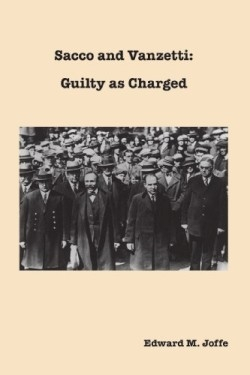
Sacco and Vanzetti
Guilty as Charged
During a payroll robbery in 1920, someone shot and killed Alesandro Berardelli and Frederick Parmenter. Berardelli was the chief bookkeeper for a shoe manufacturing company in Massachusetts and Parmenter was a security guard who worked with him. Following a jury trial, Nicola Sacco and Bartolomeo Vanzetti, leading figures in a violent anarchist movement, were sentenced to death and summarily executed for these murders in 1927.
What followed was a firestorm of controversy, as many were convinced that these men had been condemned not for any involvement in the homicides, but rather for their political beliefs and Italian heritage. Celebrities who took up Sacco and Vanzetti’s cause at the time included H. G. Wells, Marie Curie, George Bernard Shaw, and Albert Einstein. Even today the debate lingers—at least for some. For example, in 2002, some seventy-five years after the trial, former Massachusetts Governor Michael Dukakis proclaimed “it was clear that both the judge and jury were prejudiced against immigrants with radical political beliefs.”
Author Edward Joffe attempts to prove that despite the fact that they probably did not receive a fair hearing, Sacco and Vanzetti really were guilty of the murders. Modern forensics were not available at the time, so it’s unlikely that the hypothesis can ever be proven, but there were several pieces of evidence on record that support the author’s perspective. For example, Sacco had the deceased’s weapon in his possession when he was arrested. Furthermore, he owned six rare .32 caliber Winchester bullets that matched the type that killed Berardelli. That seems to both place him at the scene and support the theory that his gun was, in fact, the murder weapon.
Using facts like these, Joffe does a decent job of telling the story and proving his point, but unless readers are truly passionate about this subject they will have a very difficult time staying interested in his book. Like a high school history textbook, it is excruciatingly packed with names, dates, and places. It reads like a legal brief; we do not get to know or come to care about the characters as people.
The layout uses a surprisingly large typeface, so while the book is 243 pages long it is far from content-rich. There are quotes aplenty but references and footnotes are sparse. Furthermore, Joffe does not reveal anything about his background or academic credentials. Scholars should be prepared to support and defend their work. Without an author biography and clearer citations it is challenging to accept all of his statements at face value.
Overall, the research is adequate and the writing is relatively clear. The challenge is that the book is tedious in the extreme. For readers who are passionate about Sacco and Vanzetti it is worth a read, but those generally interested in American history should probably give it a pass.
Reviewed by
Lawrence Kane
Disclosure: This article is not an endorsement, but a review. The publisher of this book provided free copies of the book and paid a small fee to have their book reviewed by a professional reviewer. Foreword Reviews and Clarion Reviews make no guarantee that the publisher will receive a positive review. Foreword Magazine, Inc. is disclosing this in accordance with the Federal Trade Commission’s 16 CFR, Part 255.
